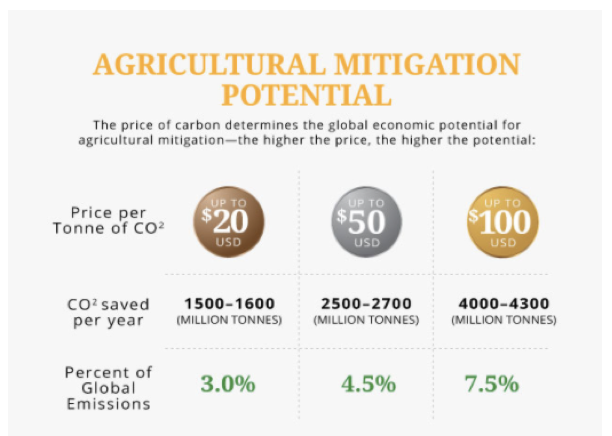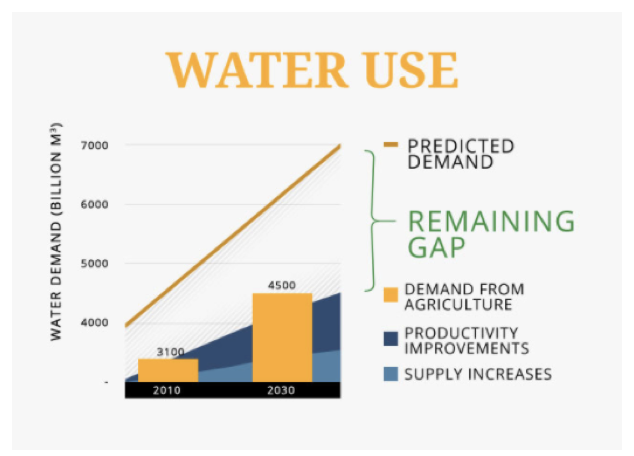Given that farming makes use of many of our natural resources, from land, to water, to energy, helping farmers become more efficient in their work will also help advance goals on protecting the environment.
Through a new campaign titled ‘#SDG2countdown,’ Farming First is taking a detailed look at each of the five targets of SDG 2, exploring ways our supporters and partners have been taking us closer to ending hunger.
When it comes to encouraging prosperity for people and the planet, you may think that agriculture is an unlikely place to start. Yet with 70% of the rural poor relying on agriculture for their livelihoods, it makes a lot of sense to focus on farming.
At Farming First, we have been working to highlight this link between agriculture and many of the Sustainable Development Goals (SDGs). Given that farming makes use of many of our natural resources, from land, to water, to energy, helping farmers become more efficient in their work will also help advance goals on protecting the environment.


Our farmers – particularly those in the developing world – are also among the most at risk from a changing climate. Higher temperatures and more extreme events such as drought and flooding threaten their ability to provide food for an ever-growing population. Yet at the same time, agriculture holds tremendous potential to bring down global greenhouse emissions. This can be achieved through improving soil’s ability to capture carbon, making livestock more productive and growing more on less land to prevent deforestation. So, investment in agriculture can also bring us closer to meeting global climate targets. (See https://www.youtube.com/watch?v=krubffiCYoY&feature=youtu.be)
As we approach the High Level Political Forum on Sustainable Development (HLPF) that will review progress made on several SDGs, including ending poverty, hunger and improving health, Farming First has been working to highlight the ways that agriculture can play a role. Through a new campaign titled ‘#SDG2countdown,’ we are taking a detailed look at each of the five targets of SDG 2, exploring ways our supporters and partners have been taking us closer to ending hunger. But, the stories of success speak to many more Goals than just SDG2, which we hope will demonstrate to those implementing the SDGs the powerful impact that innovations and investments in agriculture can have.
Encouraging gender equality
Women make up approximately 43% of the agriculture labor force in the developing world. Yet, they typically produce 20-30% less than their male counterparts, due to lack of access to resources. As we explored SDG 2.4 on resilient food systems, the International Livestock Research Institute told us that promoting livestock keeping among women has a positive effect on household welfare. Not only are small ruminant animals productive all year round (unlike seasonal crops), women can also make extra money from selling hides, and feed their children nutritiously with the meat and milk the animals produce. (See https://www.youtube.com/watch?v=OFIZUb-fF00&t=5s)
Ending poverty and promoting prosperity
During our in-depth look at SDG 2.3, which focuses on doubling smallholder productivity and incomes, we saw the power that investments in agriculture could have in ending poverty. Syngenta’s ‘Growing Together’ initiative, for example, has tripled the income of rural farmers in Bangladesh since 2014. This has been achieved by establishing 230 farmer groups where smallholder farmers and landless laborers meet monthly to discuss social and agricultural issues. They also developed a training framework that includes a ‘learning from peers’ in which lead farmers share new farming techniques learned from agronomic experts. By mid-2018, Syngenta hopes to reach over 100,000 smallholders with this project.
Improving health for all
SDG 2.2 takes a detailed look at ending malnutrition. This still affects one in four people in sub-Saharan Africa. But, interventions in the agriculture sector, can put an end to this. The International Center for Tropical Agriculture (CIAT) is applying machine learning technology to search for early signs of potential crop failures, drought, rising food prices, and other factors that can trigger food shortages. Over time, this bespoke system – known as the Nutrition Early Warning System (NEWS) – will become “smarter” and more accurate so that data can be used to predict the likelihood of malnutrition threats before they occur, while also suggesting mitigating measures. This will enable governments, donors and NGOs to pursue more rapid, tailored interventions for stopping malnutrition disasters before they begin.
We believe agriculture is a common thread, holding together many of the SDGs. If we can focus investment and innovation on this key sector, we can make major advancements in sustainable development.
For more stories of success, visit www.farmingfirst.org/SDGs or search #Ag4SDGs on Twitter.